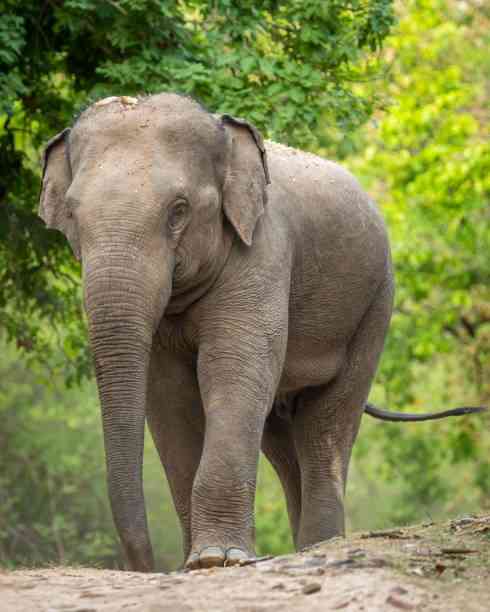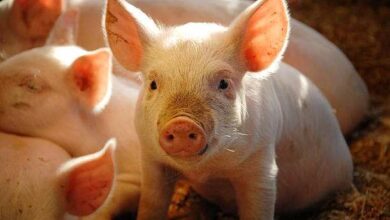Top 10 Tallest Animals in the World
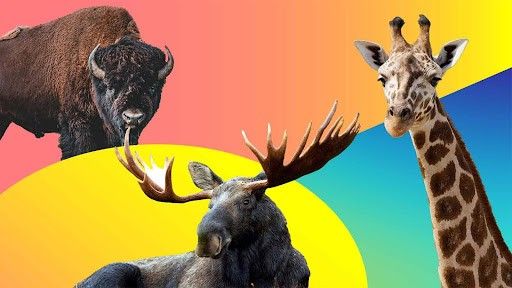
Top 10 Tallest Animals in the World Ranked by Real Height
Nature has always found its way into the animal world. From the icy tundras of the Arctic to Africa’s vast plains, some of the tallest animals have greatly evolved to acquire astonishing heights. Whether it’s to have easy access to food, dominate the environment, or spot predators, these towering mammals are the epitome of evolution. Let’s explore the top 10 tallest animals in the world, ranked by their real height.
1. Giraffe
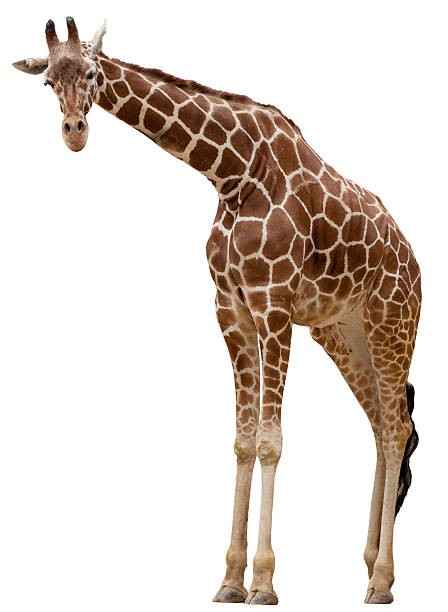
The giraffe is the tallest animal in the world. Native to sub-Saharan Africa, these massive animals are known for their long necks. Unlike other herbivores that cannot access taller trees, the giraffe’s long necks make it easier for them to browse treetop foliage without any challenges. Their necks are not only advantageous during their feeding process but also offer them a clear view of predators.
Like human beings, the giraffes have seven vertebrae with each being 10 inches long. The maximum height of a giraffe is 5.8 meters long (19 feet) and the average height is 4.8 meters 915.7 feet). A normal male giraffe weighs up to 1,200 kilograms.
2. African Elephant
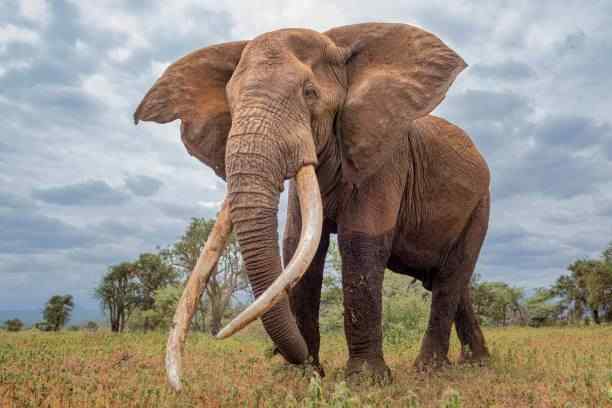
The African elephant is the second tallest and largest land animal. These massive creatures are known for their excessively huge ears, curved tusks, and long trunks. Elephant’s height makes it easier for them to intimidate predators and access high branches.
These majestically land animals are highly social and intelligent. They often live in matriarchal herds, which makes it easier for them to protect their small ones. Their size and height make them invincible to any predator. The maximum height for the African elephant is 4.8 meters (15.7 feet) and an average of 2.9 meters (9.5 feet).
3. Asian Elephant
The Asian elephant is slightly smaller compared to the African giants, but they are still among the animals on earth. They are mostly present in forested areas in South and Southern Asia. These massive animals are also revered in various cultures, making them a special species to the Asian people.
Unlike the African giant elephants, not all the Asian male elephants have tusks. Also, their domed heads and smaller ears make them different from their African cousins. The Asian elephant has a maximum height of 3.4 meters (11.3 feet) and an average height of 2.7 meters (8.9 feet).
4. Polar Bear
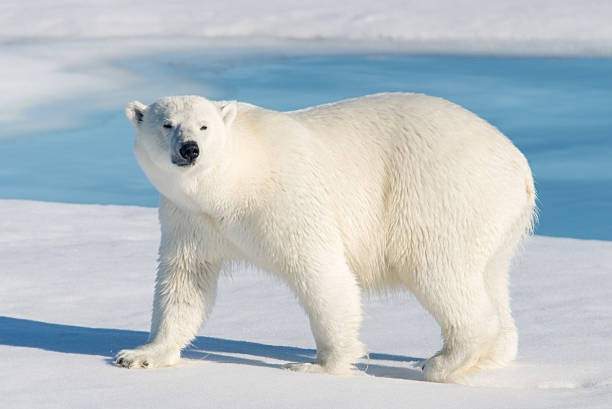
When standing on their hind legs, polar bears are impressive figures of the Arctic. These meat-eaters are made for cold weather, with a layer of fat and thick fur that keeps them warm in freezing temperatures.
They are strong swimmers and can cover long distances across water and ice looking for seals, their main food source. The polar bear has a maximum height of 3.4 meters or 11.3 feet on its hind legs and an average height of 1.6 meters or 5.2 feet on all four legs.
5. Brown Bear
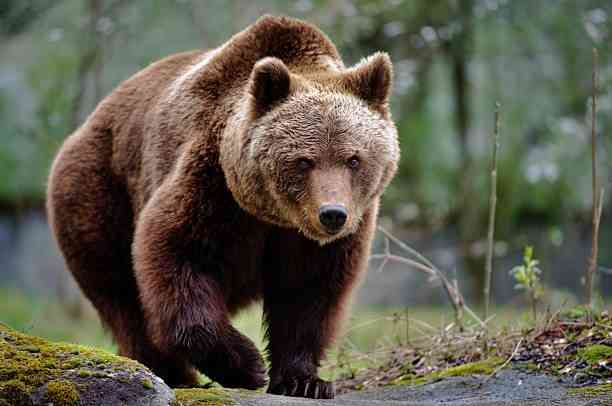
Brown bears, especially the Kodiak subspecies, are some of the heaviest and tallest land carnivores. These amazing creatures live in North America and Eurasia. They eat a variety of foods, including berries and salmon.
Despite their size and height, brown bears can run as fast as 35 miles per hour. Unlike other tall animals, the brown bears are great climbers. They have a maximum height of 3.0 meters or 9.8 feet on the hind legs and an average of 1.5 meters or 4.9 feet on all four legs.
6. Ostrich
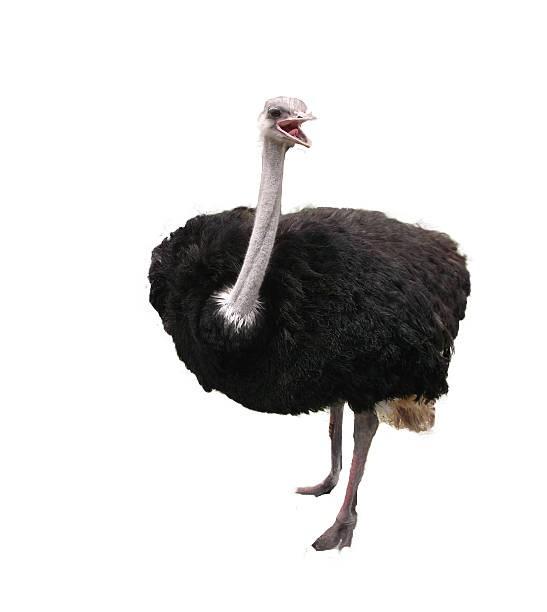
The ostrich is the heaviest and tallest bird in the world. It is native to Africa. These flightless creatures use their long legs for running, reaching a speed of up to 70 km/h (43 mph). Their height allows them to see a wide area for spotting predators, and their strong legs, acting as protective mechanisms can deliver fatal kicks. The ostrich has a maximum height of 2.8 meters (9.2 feet) and an average height of 2.1 meters (6.9 feet).
7. Bactrian Camel
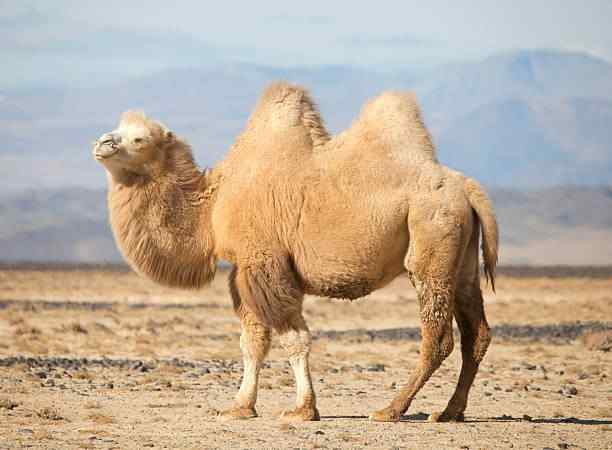
Bactrian camels, known for their two humps, are designed to survive in the tough deserts of Central Asia. Their body structure allows them to control body temperature and see water sources from far away. These amazing animals are very tough, which allows them to easily endure harsh temperatures and survive without water for days. The Bactrian Camel has a maximum height of 2.5 meters (8.1 feet) and an average height of 1.9 meters (6.2 feet).
8. Dromedary Camel
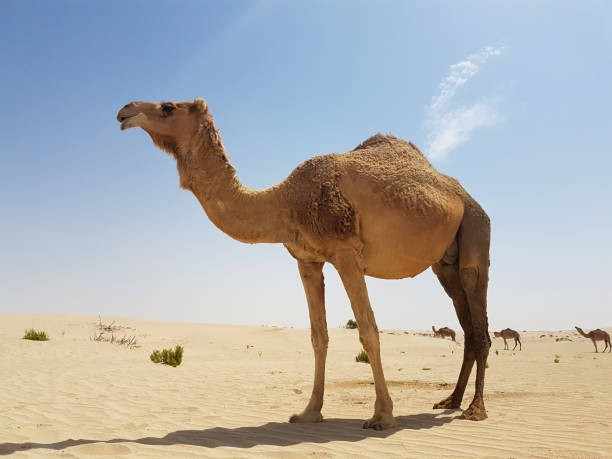
The dromedary or Arabian camel is shorter compared to the Bactrian Camel. This camel breed is still tall this is why it is still among the tallest animals on earth. Unlike the Bactrian Camel, this species has a single hump, built mainly for fat storage. The long and strong legs keep the Camel’s body away from the hot sand in the desert. This animal has a maximum height of 2.4 meters or 7.8 feet and an average height of 2.1 meters or 7 feet. They are a common species in the Middle East and North Africa.
9. Moose
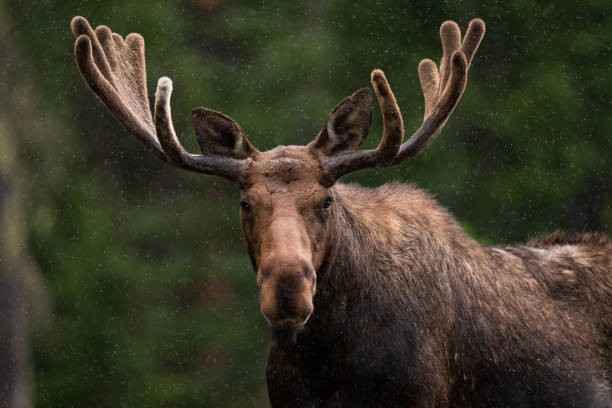
The moose is of the deer family and the tallest. The maximum and average height of moose is 2.3 meters (7.6 feet) and 1.9 meters (6.2 feet) respectively. They are found in regions like the North America, Europe and Asia. Moose thrive well in colder and forested environments. Their long legs make movement in marshes and snow easy.
10. Gaur – The Wild Bovine Behemoth
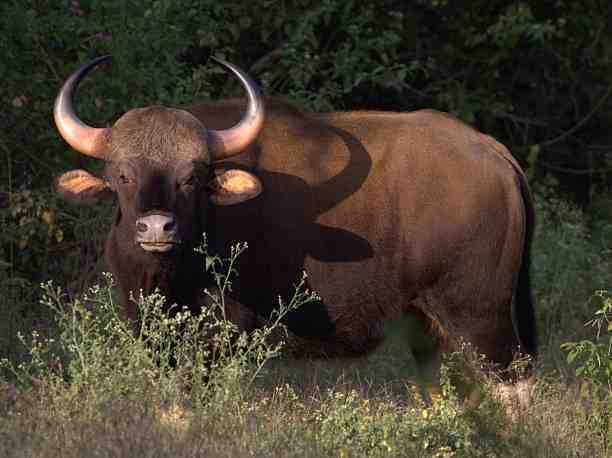
The gaur or Indian bison, is the tallest animal in the world of wild cattle. These strong herbivores are found in South and Southeast Asia. They are known for their impressive size and strength. The Gaur has a maximum height of 2.2 meters or 7.2 feet and an average height of 1.8 meters or 5.9 feet.
Factors Influencing Height in Animals
Height in animals is influenced by environment, evolutionary pressures, and genetics. Here are the critical factors that affect how tall animals can grow:
Genetics – The Blueprint of Growth
Genetic inheritance influences an animal’s potential height. The DNA helps determines their hormone regulation, skeletal structure, and growth speed. For instance, giraffes have genes that helps develop longer neck vertebrae, while elephants have genes that promote longer legs and heavy bone density.
Growth Hormones and Endocrine Function
Hormones like growth hormone and insulin-like growth factor 1 are vital for height control in animals. These hormones promote cell division and the growth of bones during early development. Any health or environmental challenges during the production of hormone can result in excessive growth or stunted growth.
Nutrition – Fuel for Development
Sufficient nutrition in animals body especially during early stages is crucial for development. Minerals like calcium, protein and Vitamin D & A help with the density and growth of the bone, which makes malnutrition a great challenge for the general growth of an animal.
Environmental Conditions
Habitat and climate change can affect height over time either positively or negatively. Animals like polar bear and moose that are prone to colder temperatures often grow larger and thicker to keep warm, while those in dense forests may evolve to be shorter to move more easily.
Evolutionary Adaptations
Height is advantageous and taller animals like giraffes are the luckiest since they can use their long necks to have an easy access to treetops. Taller birds like ostrich also use their long and strong limbs to detect any predators around their surroundings. For predators like bears, they use height dominate or terrify their prey.
Sexual Dimorphism
In most species, male animals are taller compared to female counterparts due to sexual selection. Larger males may have better chances of defending territories or winning mates, which is a great trait for reinforcing height over generations.
Health and Disease
Chronic illness skeletal disorders, and parasitic infections can hinder growth. In wild populations, poor health or disease outbreaks can cause declines in average height over generations.
How Might Climate Change Impact Animal Height in The Future?
Climate change can impact animal height in surprising ways, depending on species, habitats, and ecological pressures. Here is how climate impact the height of animals in the future:
Resource Scarcity May Stunt Growth
The ecosystem can be disrupted by climatic change, making it difficult for the production of water and food to increase. For different species, particularly herbivores, poor nutrition in their growth stages promotes stunted growth. Animals like giraffes experience seasonal changes in food quality, making droughts a danger to their general growth and development.
Temperature and Body Size: Bergmann’s Rule in Reverse?
Animals that reside in colder areas are genetically larger to help maintain the optimal level of heat in their body. As temperature increases some species tend to be smaller in body size to release excess heat. This often result to more compact shapes in different species even when are genetically meant to be tall.
Habitat Fragmentation and Evolutionary Pressure
Fragmented habitats are beneficial to smaller and agile animals that can move through dense environments. The tallest animals, such as elephants or moose, might struggle to adapt to quickly changing landscapes. This could create evolutionary pressure for them to become shorter over time.
Shifts in Predation and Competition
Animals are prone to changing habitats or environments due to climatic change. When this happens, a new predator-prey relationship is often formed. However, this might be challenging for the tallest animals since moving might be tiresome, therefore affecting natural selection due to climatic change.
Oceanic and Aquatic Species
Marine habitats can also have a negative effect on the growth rate of fish and invertebrates, especially when water is acidic or warmer. Limitation of oxygen in water bodies can alter the overall growth and development of fish. This leads to shorter average heights and lengths.
What Could Be the Ecological Impacts of These Height Changes?
Changes in animal height can come from climate change, evolutionary pressures, or habitat shifts. These changes can impact ecosystems in surprising ways. Here’s how they might reshape ecological dynamics:
Disrupted Predator-Prey Relationships
Height has a great impact on visibility, speed, and reach. Therefore, taller predators seeing or catching preys might challenging. If a predator is smaller or short, they have very minimal chances in hunting. This leads to an increase in prey population and disrupt the food web.
Altered Plant-Animal Interactions
Vegetation in habitats is shaped by tall herbivores such as elephants and giraffes since they eat high foliage. If their height decreases, it could change where they feed, hence affecting plant diversity and forest structure. Taller plants could become more common, or there might be too much growth in the lower layers of vegetation.
Shifts in Ecosystem Engineering
Technically, the ecosystem engineers are the taller animals. For example, elephants create water holes and knock down trees. Therefore, if there is a decrease in their size and height, the ability to change the landscape could lessen. This would impact other species that depend on these changes for survival.
Changes in Competition Dynamics
Height can be disadvantageous when it comes to finding food, mates, or nesting sites. Generally, competition dynamics might change in habitats when animals become smaller or larger. In dense habitats, smaller animals may have an edge over taller ones. However, the tallest animals might lose their advantage in open environments.
Cascading Effects on Biodiversity
Because height and body size have great impact on ecological roles, even minimal changes can ripple through ecosystems. For example, if seed dispersers or tall pollinators reduce, plant reproduction may face challenges hence affecting the food chains.
Final Thoughts: Why Height Matters in the Animal Kingdom
Height is an essential aspect to some animals in a habitat. Generally, height is critical in different ways. This includes easy access to food, show of dominance, spotting predators, and accessing food. From the giraffe’s long neck to the moose’s tall antlers, each of these animals has adjusted to its environment in impressive ways. These giants of the wild remind us of the variety and creativity of life on Earth. Whether you’re a wildlife fan or just curious about nature’s extremes, these tall creatures will surely leave you amazed.
Frequently Asked Questions (FAQs)
Q1: Which animal is the tallest on record?
At roughly 5.88 meters (19.3 feet), the tallest giraffe ever measured was the tallest land animal ever recorded.
Q2: Are ostriches the tallest bird?
No, the tallest and heaviest birds in existence today are ostriches.
Q3: What makes giraffes so tall?
In order to reach high foliage and detect predators from a distance, giraffes developed long necks and legs. Their height also affects dominance and mating behaviors.
Q4: Is it possible for polar bears to reach heights of more than eleven feet?
Indeed! Large male polar bears are the tallest bear species, reaching heights of over 11 feet when standing on their hind legs.
Q5: Are giraffes the tallest extinct animals?
Yes, some dinosaurs like the Sauroposeidon were estimated to reach heights over 18 meters (59 feet), but among living animals, giraffes reign supreme.
